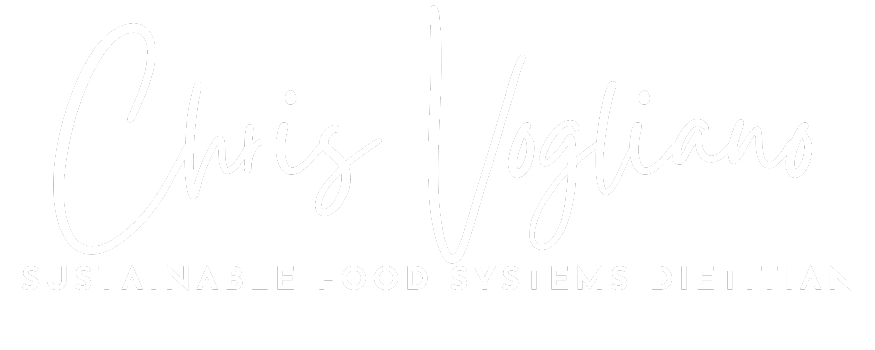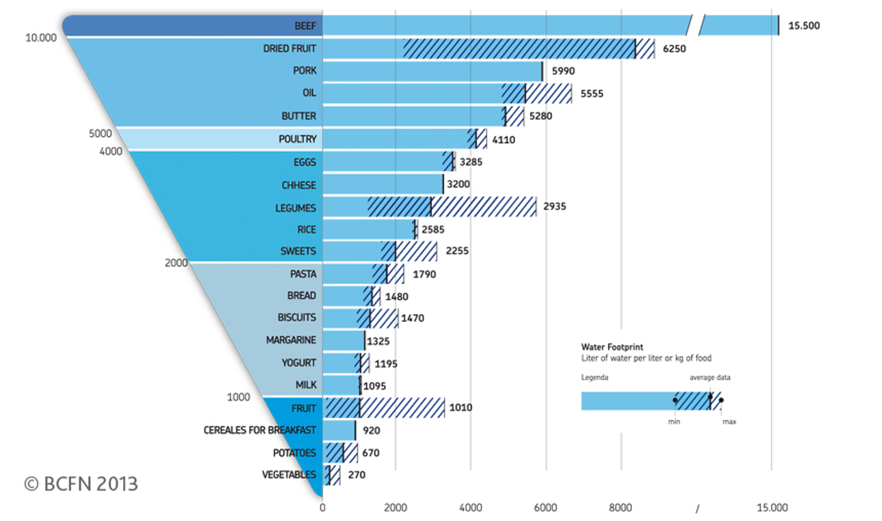Worried about climate change? Act now with your fork!
your diet can save the planet.
What we eat can have profound impacts on not only our own health, but also the health of the environment. A ridiculous amount of resources go into producing the food that we eat: water, fertilizer, pesticides, and fossil fuels to name a few. Nearly 80% of water and 20% of all greenhouse gas emissions are attributed to growing our food. (1,2)
Some foods have much higher greenhouse gas emissions than others, meaning we can actually have significant impacts on the health of our planet by what we choose to eat.
Lucky for us (and the planet), there’s significant overlap between foods that are good for us and have a lower environmental impact.
How do we eat a sustainable diet?
The graph below from The Barilla Foundation highlights the overlaps between what's good for us and the planet.
Source: Barilla BCFN Double Pyramid
So how do i make a difference? (Hint: It's easy)
- Be mindful of portion sizes; step one to reducing your 'food-print' is eating only what you need.
- Reduce the amount of food you throw away. Don’t lose track of your leftovers, and aim to be creative with what you have in the kitchen before opting to shop again. See my blog post on that here.
- Choose sustainable protein options (list below). The livestock industry is incredibly carbon intensive. Reducing your meat consumption is the fastest way to reduce your environmental “food-print”.
- Consume dairy products in moderation.
- Choose fish and seafood sourced from certified fisheries such as http://www.seafoodwatch.org/
- Limit consumption of foods high in fat, sugar or salt and low in nutrients (chips, confectionery, sugary drinks).
- Opt for tap water over other beverages – particularly soft drinks
Top Sustainable Protein Options:
- Lentils (red, yellow, green, black, and so many more!)
- Tofu
- Tempeh
- Beans (black, chickpeas, red, etc.)
- Quinoa
- Amaranth
- Soy / Hemp Milk (has highest protein content of all milk alternatives)
- Green Peas
- Hemp / Chia Seeds
- Nuts and nut butter (cashews, peanuts, etc.)
The water we eat.
The amount of water that goes into producing the food we eat is often overlooked, and it extraordinarily high. Many regions of the world in which our food is produced are expected to experience dramatic weather pattern changes due to climate change. Choosing foods that use less water is also a great way to reduce our food-print. See chart below for more information.
Note: Graph is in liters per kg of food.
Thanks for reading - let me know how you are reducing your carbon footprint in the comments below!
- Chris the Dietitian
References
- Tilman, D., & Clark, M. (2014). Global diets link environmental sustainability and human health. Nature, 515(7528), 518–522. https://doi.org/http://www.nature.com/nature/journal/v515/n7528/full/nature13959.html
- http://www.goodforyougoodfortheplanet.org/cross-issues/double-pyramid/
- Adapted from: Garnett, T. (2014). Changing What We Eat: A Call for Research and Action on Widespread Adoption of Sustainable Healthy Eating. Food Climate Research Network
Main photo credit: Pixabay - https://pixabay.com/en/fork-lake-vevey-switzerland-2104990/




